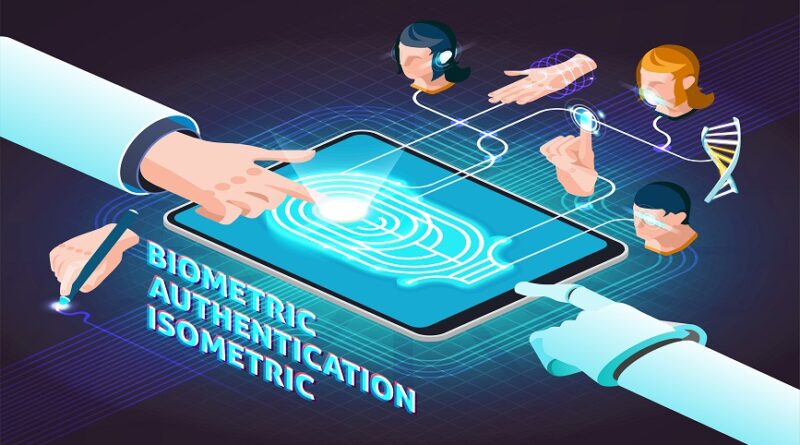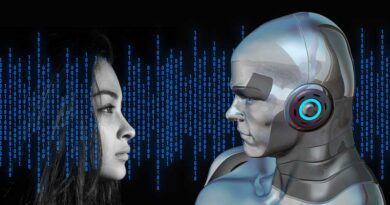Biometrics: Enhancing Security in a Digital World
Biometrics is the measuring and study of a person’s distinctive physical or behavioral features. It’s a technology field that focuses on identifying and verifying individuals’ identities based on their unique traits.
Biometric traits can be classified into two main categories:
Physiological and Behavioral. Physiological traits include fingerprints, facial features, iris patterns, palm prints, hand geometry, and DNA. Behavioral traits include voice patterns, signature dynamics, keystroke dynamics, and gait.
The field of biometrics continues to evolve with advancements in technology. Some emerging technologies include facial recognition systems with deep learning algorithms, vein pattern recognition, and behavioral biometrics using artificial intelligence.
How does it work?
Enrollment: An individual’s biometric information is recorded and saved in a database during the enrolment phase. Biometric data is recorded and converted into a digital template for later processing and comparison.
Capture: Biometric traits are recorded using specialized sensors or devices when individuals attempt system access or identification verification. For instance, while facial features are recorded using cameras, fingerprints are recorded using fingerprint scanners.
Extraction: After recording the biometric property, the system retrieves relevant details by converting the captured trait into a digital representation.
Comparison: When the registration phase is complete, the extracted template is then compared to the templates kept in the database.
Decision and Authentication: The person’s identification is determined based on the comparison results, where the captured biometric template matches stored templates within a predefined threshold.
Real-Time Applications
Access Control and Security: Biometric systems are commonly used for access control to secure areas. Biometric traits such as fingerprints, facial recognition, iris patterns, or palm prints are used for authorized access control to physical buildings, rooms, facilities, computer systems, networks, or data.
Mobile Devices and Payments: Biometrics is integrated into mobile devices for user authentication and secure payments. Fingerprint scanners, facial recognition, or iris scanning technology are utilized to unlock smartphones, authorize transactions, and provide a convenient and secure user experience.
Healthcare: Biometrics finds applications in the healthcare sector for patient identification and access control to sensitive medical records. Palm vein recognition, fingerprint scanning, or facial recognition can be used to verify patient identities, reduce medical errors, and protect patient privacy.
Time and Attendance Tracking: Biometric systems are used in workplaces and educational institutions for time and attendance tracking. Employees or students can clock in and out using their fingerprints, palm prints, or facial recognition, ensuring accurate attendance records and preventing proxy attendance.
Personal Devices and Wearables: Biometrics is integrated into personal devices and wearables for user authentication, health monitoring, and personalized experiences. Examples include smartwatches or fitness trackers that use heart rate monitoring or unique biometric traits for user identification.
Voter Registration and Elections: Biometrics can be used in voter registration systems to prevent voter fraud and ensure the accuracy of voter rolls. Fingerprint or iris scanning can help establish unique identities and authenticate voters during elections.
Future Scope
Continuous Authentication: Traditional biometric systems typically authenticate individuals at specific points in time. However, there is a growing interest in continuous authentication, where biometric data is continuously monitored to ensure the ongoing presence of the authorized user. This can strengthen security and detect unauthorized access or account takeovers.
Wearable Biometrics: The integration of biometric sensors into wearable devices, such as smartwatches or fitness trackers, is an emerging trend. Wearable biometrics enable continuous monitoring of vital signs, activity patterns, and behavioral traits for personalized health tracking, authentication, and well-being.
Improved Accuracy and Performance: Advancements in machine learning, deep learning, and artificial intelligence algorithms enhance biometric systems by improving accuracy, reducing errors, and adapting to varying conditions.
Privacy-Preserving Biometrics: Research is being conducted on privacy-preserving biometric techniques to address privacy concerns. These methods aim to secure individuals’ biometric data during enrollment, storage, or comparison processes by using encryption, secure protocols, or decentralized architectures.
Improved User Experience: Efforts are underway to improve the user experience of biometric systems by reducing enrollment and authentication times, enhancing usability, and addressing challenges for specific user groups (e.g., children, elderly, or disabled individuals).
Enhanced Anti-Spoofing Techniques: Biometric systems face challenges from spoofing attacks using fake or replicated traits. Ongoing research aims to develop advanced anti-spoofing techniques, like liveness detection and to ensure the authenticity of captured biometric data.




